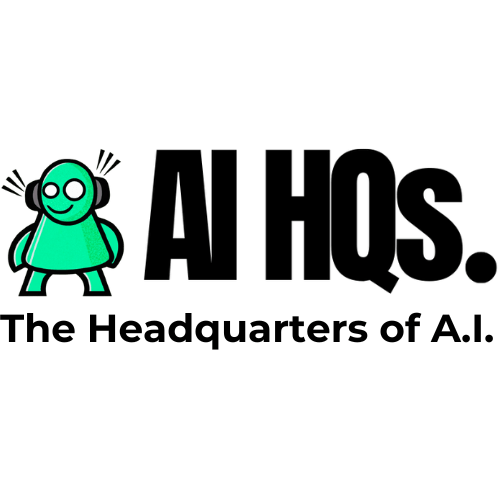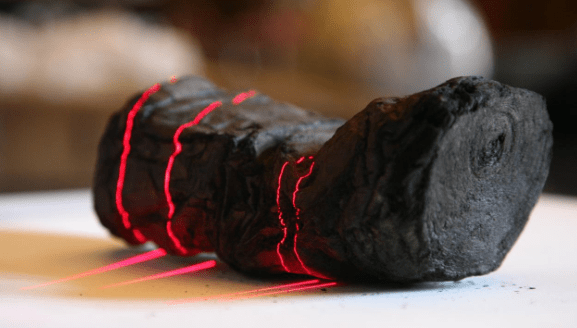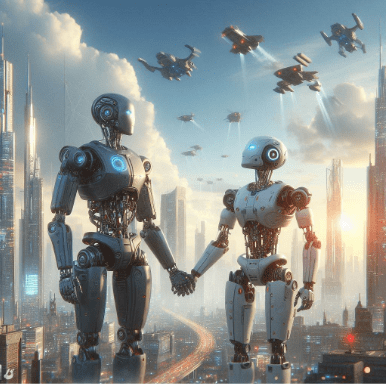Decoding the Ancient Enigma: Unlocking Herculaneum’s Papyri through AI
In the shadow of Mount Vesuvius, amidst the remnants of a cataclysmic event frozen in time, lies a treasure trove of knowledge waiting to be unveiled—the Herculaneum papyri. These ancient scrolls, carbonized and preserved by the volcanic eruption in 79 AD, have remained a tantalizing mystery for nearly two millennia. The mysteries contained within these ancient scrolls have perplexed scholars and history enthusiasts for centuries. However, a recent breakthrough in the form of machine learning has breathed new life into this ancient enigma.

The Vesuvius Challenge, an intellectual pursuit and an ode to human resilience, sought to overcome this challenge. It offered a series of awards, culminating in the main prize of US$700,000 for reading four or more passages from a rolled-up scroll. In this quest, Luke Farritor emerged as a beacon of hope. He was awarded the ‘first letters’ prize of $40,000 for decoding more than 10 characters in a 4-square-centimeter area of the papyrus. Until now, researchers could only study opened fragments, and although a few Latin works were identified, most of the scrolls contained Greek texts relating to the Epicurean school of philosophy. However, more than 600 scrolls remain intact and unopened, offering an untapped wealth of knowledge. Excitingly, there could be even more scrolls buried on lower floors of the villa, waiting to be excavated.
Luke Farritor, a contestant in the Vesuvius Challenge, achieved an astonishing feat this August. He became the first person in two thousand years to witness an entire word from within an unopened scroll. This landmark discovery earned Luke the well-deserved $40,000 First Letters Prize. Shortly after, another contestant, Youssef Nader, independently identified the same word in the same region, achieving even clearer results and securing the second-place prize of $10,000.
The path to this groundbreaking revelation began with a novel approach by Casey Handmer, who first detected convincing evidence of ink within the sealed scrolls. His discoveries sparked inspiration and led to the eventual triumph of Luke and Youssef. But how did this remarkable journey unfold, and what role did machine learning play in this quest for ancient knowledge?
The narrative begins in 2019, when Professor Brent Seales and his team at the University of Kentucky’s EduceLab embarked on a mission to image the Herculaneum scrolls in a particle accelerator. Generating high-resolution 3D CT-scans, they provided a crucial groundwork, allowing the subsequent progress in deciphering the ancient texts. The team also scanned and photographed detached scroll fragments bearing visible ink, establishing a vital ground truth dataset. These images served as the basis for Farritor’s algorithm, marking the convergence of artificial intelligence and cutting-edge imaging technologies.
Stephen Parsons, a graduate student under Professor Seales, focused on detecting ink within the CT-scans using machine learning models. This early success caught the attention of tech entrepreneurs Nat Friedman and Daniel Gross, leading to the inception of the Vesuvius Challenge. Launched in March 2023, the challenge aimed to expedite progress through an open competition, offering a $700,000 Grand Prize and smaller prizes for tools and techniques development.
The critical turning point occurred in August when Casey Handmer discovered a distinctive “crackle pattern” resembling ink. This pattern, discernible through meticulous examination of the segmented CT scans, marked a significant breakthrough. Inspired by Casey’s work, Luke Farritor, a college student and SpaceX summer intern, undertook the arduous task of training a machine learning model on this pattern.
With each new crackle pattern found, Luke’s model refined and improved, gradually revealing more of the intricate details within the ancient scrolls. The journey of discovery continued, as these traces began forming letters and even hints of actual words. Luke’s submission to the First Letters Prize showcased the word “ΠΟΡΦΥΡΑϹ” or “porphyras,” meaning “purple dye” or “cloths of purple.” This revelation astounded scholars and marked a significant milestone in the decoding process.
Simultaneously, Youssef Nader, a graduate student based in Berlin, pursued a different approach. Drawing from the learnings of Casey and Luke, he leveraged machine learning models from the Kaggle competition, adapting them to the scrolls. Youssef’s innovative methodology involved unsupervised pretraining on the scroll data and fine-tuning on fragment labels, leading to further advancements in deciphering the ancient text.
Through iterative pseudo-labeling and model training, Youssef successfully detected ink within the scroll segments. His model, trained solely on internal scroll segments, revealed more letters and hinted at the presence of an entirely new text from antiquity. The papyrological team corroborated these findings, further fueling excitement and anticipation for potential groundbreaking discoveries hidden within the scrolls.
This collaborative and innovative approach, fueled by competition and open-source contributions, underscores the delicate yet robust nature of progress in unraveling ancient secrets. The efforts of various individuals, from contestants to annotators and developers, collectively formed the bedrock of these remarkable discoveries.
Looking ahead, the journey to unlock the knowledge within the Herculaneum papyri continues. Youssef’s recent model has revealed four and a half columns of text, offering a glimpse into the vast potential hidden within these ancient scrolls. As the papyrological team tirelessly examines and interprets these findings, the prospect of claiming the $700,000 Grand Prize draws closer. Optimism abounds, and the collective determination to unearth this wealth of historical insights remains stronger than ever. In this race against time, the invitation stands open for all to join and contribute to this awe-inspiring endeavor. The chance to double the amount of known texts from antiquity and potentially unearth thousands more, becoming the last hero of the Roman Empire, awaits. The saga continues, and the world eagerly awaits the next chapter in this unparalleled quest to decode the ancient world.
For those curious and passionate about history, machine learning, or the intersection of both, the Vesuvius Challenge beckons—an opportunity to be a part of a historic journey, redefining our understanding of an ancient civilization. In the words of Pliny the Elder, “In the midst of things, behold the beauty of the world.” As we uncover the beauty of an ancient world through modern technology, we stand on the cusp of a new era—a fusion of past and present, united in the pursuit of knowledge. The race to decode the Herculaneum papyri continues, and the world watches with bated breath.







